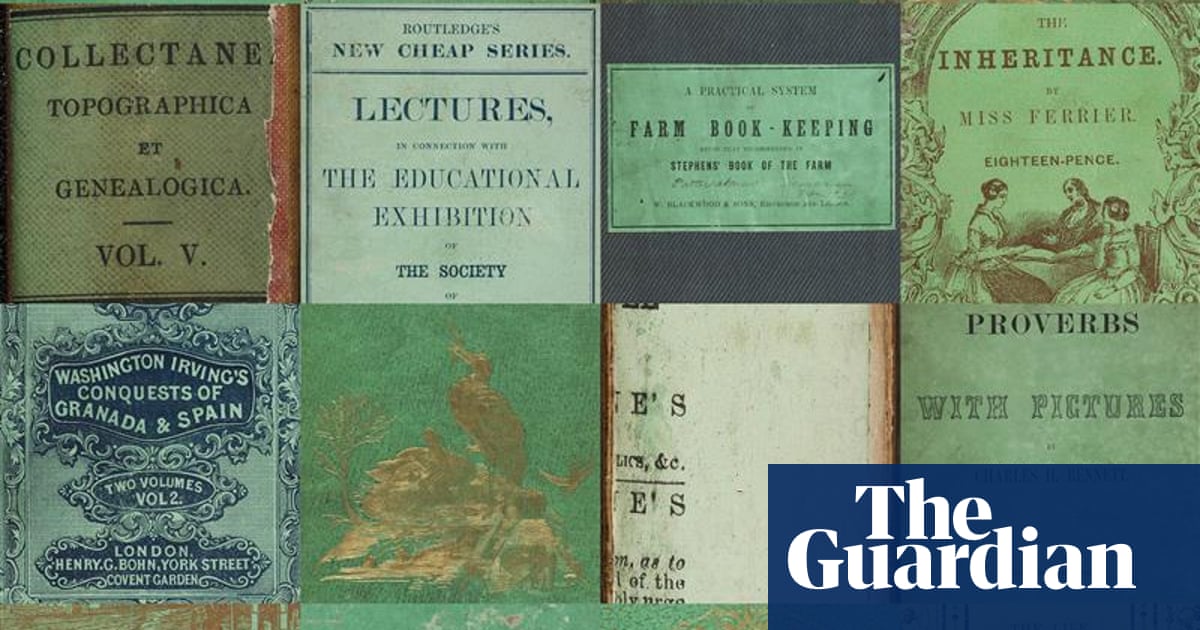imagine a future where ancient books can be handled safely, revealing their secrets without endangering readers or damaging delicate pages. This future is rapidly approaching thanks to advancements in technology designed to safeguard our literary heritage. Explore how this innovative approach to past artifact preservation uses non-destructive analysis to protect both readers and priceless texts.
Unveiling the Future: How Technology is Safeguarding Our Literary Heritage
The recent advancement of a handheld device to detect arsenic-laced pigments in books marks a meaningful leap forward in preserving our literary heritage. This innovation, born from a collaboration at the University of St Andrews, offers a glimpse into a future where technology plays a crucial role in protecting both readers and historical artifacts. Let’s delve into the potential trends and implications of this groundbreaking technology.
The Rise of Non-Destructive Analysis in Conservation
The St Andrews device exemplifies the growing trend of non-destructive analysis in conservation. Traditional methods of identifying hazardous materials frequently enough involved damaging or destroying a portion of the artifact. This new technology, though, uses a non-invasive approach, shining light on the book and analyzing the reflected light to identify the presence of toxic pigments.
This method is not only safer for the artifacts but also allows for rapid and cost-effective screening. Imagine libraries worldwide equipped wiht similar devices, able to quickly assess their collections and ensure the safety of their patrons.
Pro tip: This technology can be applied to other historical artifacts, such as paintings, textiles, and furniture, to identify harmful substances and preserve them for future generations.
Democratizing Access to Details: The Impact on Libraries and Archives
The ability to quickly identify and isolate hazardous books has a profound impact on access to information. Previously, libraries faced the challenging choice of restricting access to potentially dangerous books or undertaking costly and time-consuming testing.
With this new technology, libraries can confidently identify and remove hazardous books from circulation, ensuring the safety of their patrons while preserving access to the vast majority of their collections.This is notably crucial for rare books and special collections, where access is often limited.
Did you know? The University of Bielefeld in germany isolated 60,000 books as a precaution before the advent of this technology.
Beyond Emerald Green: Expanding the Scope of Detection
While the initial focus is on emerald green pigment, the underlying technology has the potential for broader applications. Researchers can adapt the device to detect other harmful substances, such as lead-based paints or other toxic pigments used in historical bookbinding and printing.
This could lead to a comprehensive database of hazardous materials in historical artifacts, allowing for more informed conservation efforts and a safer habitat for researchers and the public.
The Future of Conservation: Collaboration and Innovation
The development of the St Andrews device highlights the importance of collaboration between different disciplines.The project brought together scientists from earth sciences,astronomy,and physics,demonstrating the power of interdisciplinary research.
We can expect to see more collaborations between scientists, conservators, and librarians in the future, leading to even more innovative solutions for preserving our cultural heritage.
Reader Question: What other historical materials could benefit from this type of non-destructive analysis? Share yoru thoughts in the comments below!
Case Study: The French National Libary
The French National Library recently quarantined books suspected of containing arsenic, highlighting the ongoing need for such technologies. This underscores the global relevance of the St Andrews device and its potential to protect valuable collections worldwide.
This proactive approach to safeguarding historical materials is a testament to the growing awareness of the risks associated with hazardous materials and the importance of implementing preventative measures.
The Role of Education and Awareness
Alongside technological advancements, education and awareness play a crucial role. The exhibition “Poisonous books – Dangers from the past” at the Wardlaw Museum in St Andrews is a prime example of how to educate the public about the dangers of toxic materials in historical artifacts.
By raising awareness, we can empower individuals to take precautions and support conservation efforts.
Did you know? Arsenic was commonly used in the 19th century for various purposes, including bookbinding, clothing, and wallpaper.
The future of preserving our literary heritage is radiant, thanks to innovations like the St Andrews device. By embracing technology, fostering collaboration, and raising awareness, we can ensure that future generations can access and appreciate the treasures of the past.
What are your thoughts on this groundbreaking technology? Share your comments and insights below!

